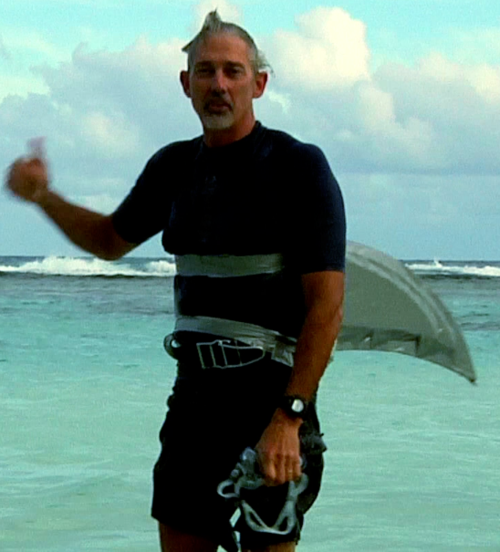Dr. Steve Palumbi studies the genetics, evolution, conservation, population biology and systematics of a diverse array of marine organisms. Along with Tony Palumbi he is the author of the forthcoming book The Extreme Life of the Sea. UnShark Week is a week long celebration of the ocean’s extremes.

Since 1987, the Discovery Channel’s annual Shark Week pumps up the thrill of encountering a dangerous shark. Teeth, danger, lunging predation, more teeth: this is what the week is mostly about. But most of the extreme species in the sea are not sharks. Sharks are not the biggest, the deepest, the fastest, even the deadliest. This week is exactly midway between Shark Weeks, 26 weeks till the next one; 26 weeks since the last. And because there are so many other thrilling species in the sea, we declare this week as UnShark Week – and dedicate it to the truly extreme animals in the ocean.
The fastest fish in the sea is not a shark. Sailfish have the unofficial record at 60 mph, and well documented speed trails have clocked tuna and wahoo at nearly 50 mph. By contrast the most celebrated human swimmers manage 6-7 mph. Billfish like marlin and sailfish feed at such high speeds that their brains and eyes can not operate fast enough. So as an adaptation to speed, these fish have evolved heaters in the brains and eyes so they can form and process images fast enough to snap up prey in high velocity sorties.
The deep sea has many sharks, mostly lithe animals like the frilled sharks or the strange looking goblin sharks. But the most epic battles of the deep sea do not include sharks. Instead they feature dark encounters between two of the world’s greatest predators, sperm whales and giant squid. In the black abyss, sperm whales hunt giant squid and a battle begins. The sharp lower jaw of the whale slices into the soft tissues of the muscular squid. But many sharp ‘teeth’ on the squid’s tentacles rip wounds on the sperm whale’s head. We can tell the species of squid from the scars it causes: round for the giant squid and razor straight for the colossal squid. You can also tell the victor – because the hard beaks of these squids end up in stomachs of sperm whales all over the world. We have no idea how many squid escape.
There is no doubt that a few sharks are ferocious – mostly modern sharks like the great white, bull, and tiger sharks. But the deadliest animals of the sea are probably as different from sharks as can be imagined. The cone snail is 2-3 inches long but can kill a human with a small harpoon-like tooth. These snails specialize in hunting fish, and have evolved a venom that shuts down nerve and muscle function in an instant. Lurking beneath the sand, with its chemical-sensing proboscis sniffing the water like a tubular snake, a cone snail waits for a fish to venture near. The proboscis rears up and jabs a hollow harpoon into the fish, injecting a measure of venom squeezed from the salivary glands. Within seconds the fish is dead. Humans are not attacked this way, of course. Danger comes when a live fish-eating cone snail is pocketed by an acquisitive diver. The harpoon, it turns out, can penetrate a pocket lining.
Last, the ocean’s biggest creatures are not sharks. True, the largest fish is a shark, the languid, gentle, plankton eating, whale shark. But the great whales are bigger. And the blue whale is the largest animal that has ever lived in the history of our planet. Traveling the oceans with an efficiency that ship designers still envy, some of these goliaths can live longer than any other mammal, or shark, and specialize on vast meals of small planktonic prey.
It is not the shark’s fault that they consistently lose the prize for fastest, deepest, deadliest, and the like. Because their competition is millions of other species just as driven to win the game of life as they are. Shark Week has raised awareness of sharks in the oceans, and UnShark week can do the same for the platoons of species that live in all the corners of the sea. These species thrive in places that demand amazing adaptations – like hydrothermal vents with water above boiling – or live in familiar habitats in startling ways. Each type could easily deserve their own week, and deliver entertainment and the thrill of discovery to us landlocked humans.
great idea!